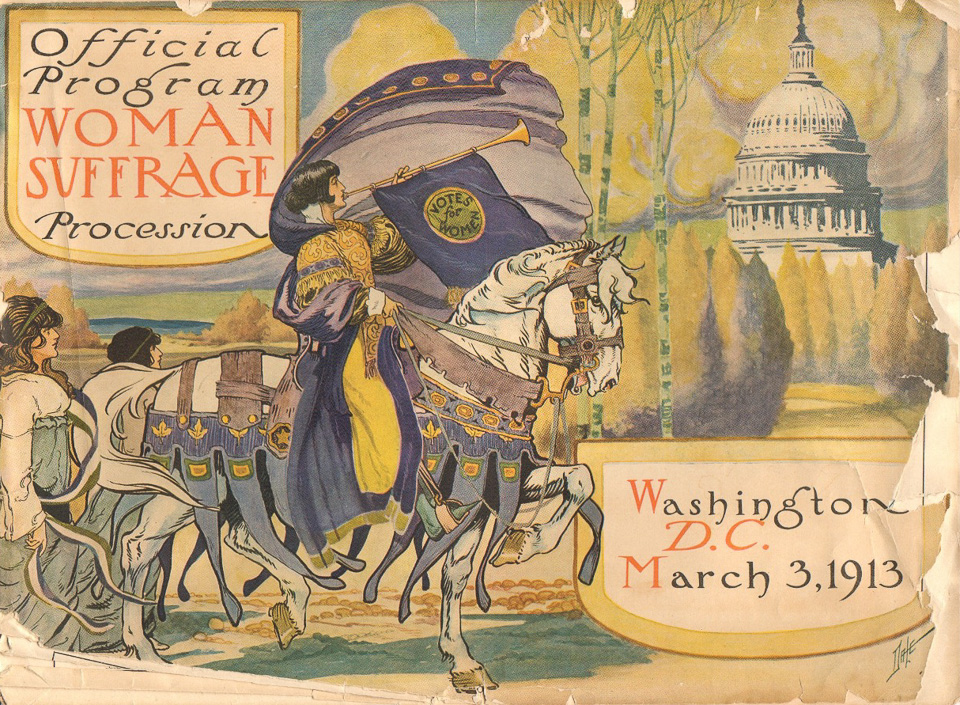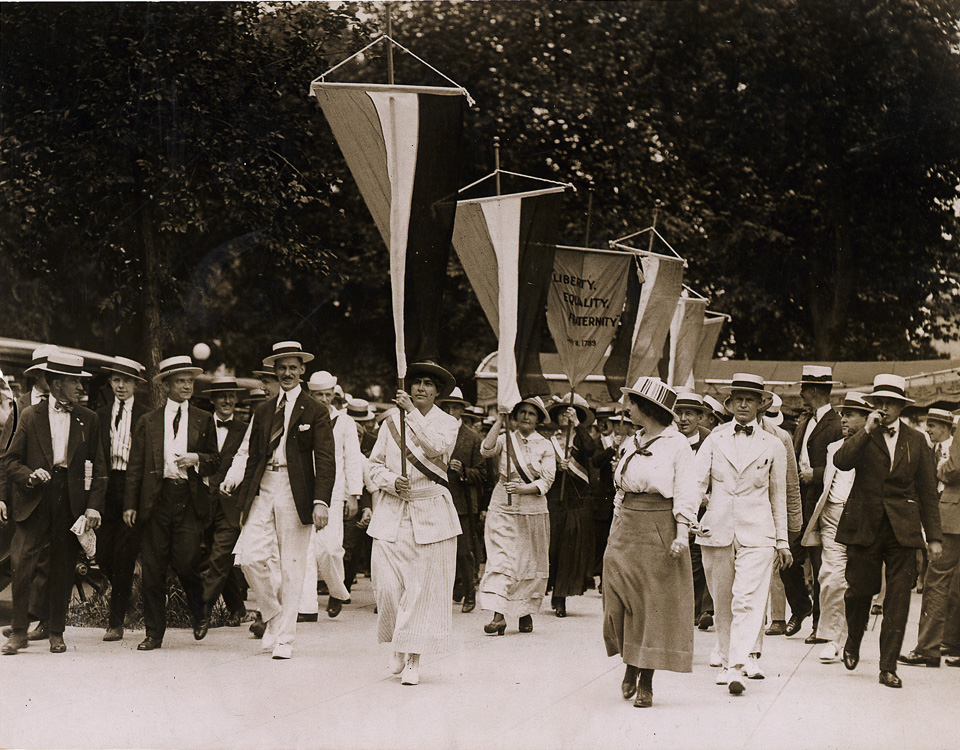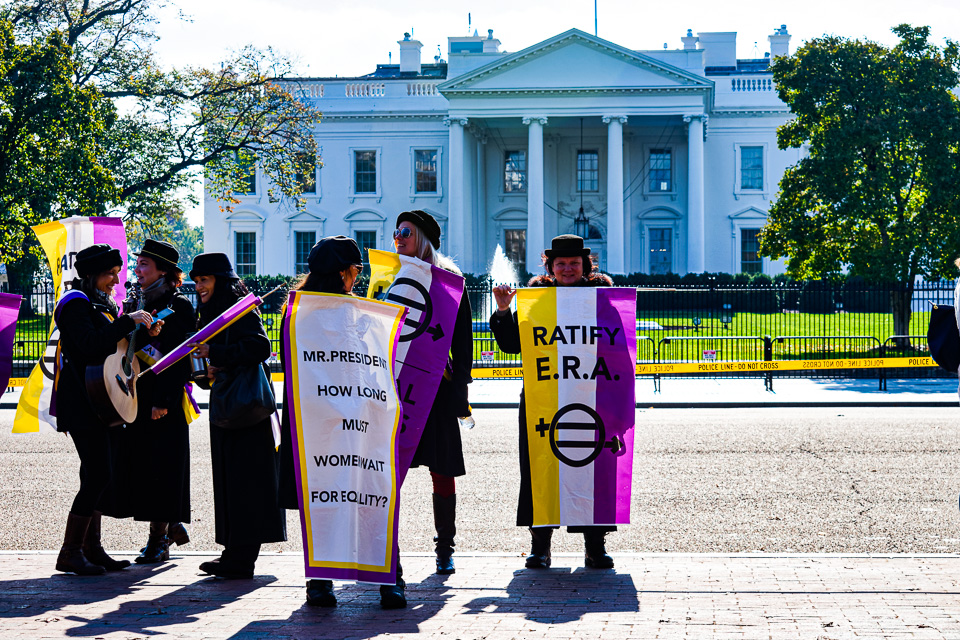
Every year during Women’s History Month, we share a film that we made in 2020 to celebrate the 100th anniversary of the 19th Amendment, the amendment that gave women the right to vote. Our 40-minute production lays out the history of the women’s rights movement in America—from Abigail Adams’ plea to her Founding Father husband to “remember the ladies” to our grandmothers’ decades-long (and at times violent) struggle to pass the Nineteenth Amendment.
Sponsored by Charlotte’s League of Women Voters, the content was originally conceived as a Powerpoint presentation to be shown at venues such as libraries and museums. But when COVID-19 put an end to in-person gatherings, the League asked us to pull together a film version that could be screened online and shared with a wider audience.
The result is a production that has become a reminder of the courageous women, many not widely known, who so tirelessly worked to advance the cause of women’s suffrage in America.

A few of the surprising facts you’ll take away from this film include the names of the women who fought for the right to vote (Susan B. Anthony—of course—but also Lucretia Mott, Elisabeth Cady Stanton, Madam C.J. Walker, Harriet Stanton Blanch, Lucy Stone, Alice Paul and Lucy Burns, to name just a few); the issues they fought for (work place protections and equal pay for equal work); and the unthinkable insults and violence they endured (women picketers were sent to work camps where they were tortured and force-fed). The tactics and strategies these women employed —grass roots marches, non-violent sit-ins, hunger strikes, lobbying Congress and even meeting the President—were later adopted to good effect by leaders of the Civil Rights movement in the fifties and sixties.
The National American Woman’s Suffrage Association, the organization that led the fight for suffrage, became, upon passage of the Nineteenth Amendment, the League of Women Voters. Today this organization continues its fight for a healthy, sustainable environment; fair voting practices; equal pay; gender equality; and economic equality for all citizens.
The Equal Rights Amendment
But what about the Equal Rights Amendment (ERA)? First proposed by suffragist Lucretia Mott in 1923 it states that “equality of rights under the laws shall not be denied or abridged by the United States or by any state on account of sex?” If recognized as law, this 28th Amendment to the U.S. constitution would guarantee that courts hold cases of sexual discrimination to the same high level of scrutiny that they give cases involving race, religion or national origin.
You might ask if we really need the ERA. Aren’t women’s rights already covered by other laws and amendments? Yes, for example, courts have looked to the Fourteenth Amendment and the Civil Rights Act of 1964, but this is not enough. State and federal laws and court precedents can always be changed, but a constitutional amendment can only be changed by another constitutional amendment. (Read more here about why the ERA is necessary.)

Where the ERA Stands Today
In 2020, Virginia was the 38th state to ratify the ERA, meeting the requirement that it be ratified by three-quarters of the states.
But the Justice Department under the Trump Administration refused to certify it as the law of the land, stating that the original deadline set by Congress had expired in 1982. That deadline, however, is irrelevant since Congress can remove it by a majority vote. To do that, the Democrat-controlled Senate plans to pass a joint resolution (S. J. Res. 4) by the end of March, 2023 to remove the deadline. Once passed by the Senate, the House must do the same. This will affirm the ERA as the 28thAmendment to the Consitution…100 years after it was first proposed!
Unfortunately, the resolution faces a tough fight in the Republican-controlled House. Republicans have long opposed the ERA, linking hands with the religious right to oppose gay marriage, gay rights, women in the military, and the amendment’s possible implications for abortion rights. Meanwhile, the result of the amendment’s long delay is that half the population of the U.S. remains unprotected in terms of basic human rights. In comparison, such rights are already protected in the constitutions of 85% of countries in the United Nations. Why should the U.S. be a laggard?!
[UPDATE: On April 27, the resolution failed to advance through the Senate. Voting, as expected, was along party lines although two women Republican senators had co-sponsored the bill.]What can we do now? At every opportunity, speak up for passage of the ERA in public forums and in elections. When politicians perceive there’s strong grass roots support, they are more likely to rally to the cause. Also visit the website (LINK) of Kati Hornung, executive director of VoteEquality, where you’ll find plenty of information and informative links on the history of the ERA and what you can do now.
In the meantime, watch our film about the story behind passage of the 19th Amendment—and get fired up to support the ERA!
